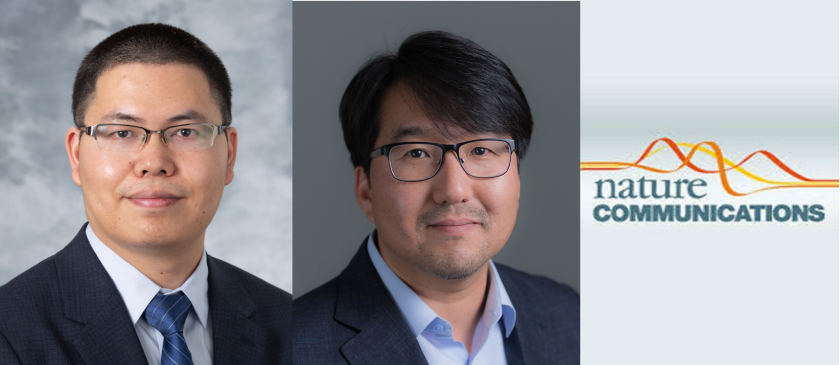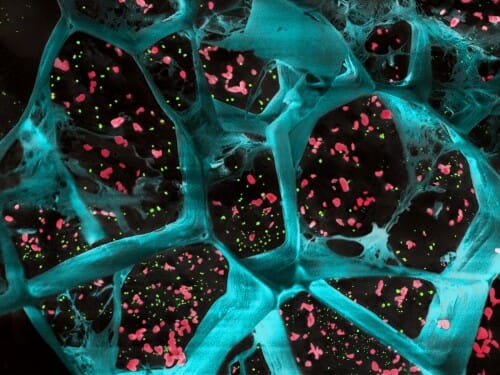
6
April

School of Pharmacy Assistant Professor Quanyin Hu and his CIPT Lab team, along with research collaborators, develop a gel that effectively keeps in check certain tumors, with their findings published in Nature Communications
By Eric Hamilton
This article originally appeared on UW–Madison’s news page.
A new biodegradable gel improves the immune system’s ability to keep cancer at bay after tumors are surgically removed.
The gel, tested in mice, releases drugs and special antibodies that simultaneously deplete immune-blocking cells called macrophages from the surgical site and activate T cells so they can attack cancer.
University of Wisconsin–Madison scientists tested the gel on mouse models of several cancers. They found that the gel effectively kept in check tumors that are known to respond well to this kind of immune therapy, like CT26 colon cancers. But the gel also worked well against B16F10 melanomas, S180 sarcomas and 4T1 triple negative breast cancers, which are less responsive to immune therapy and more prone to metastasizing.
These proof-of-concept experiments will support additional research on other animal models that could lead to future clinical trials in people.
The experiments were led by the lab of Quanyin Hu, a professor in the UW–Madison School of Pharmacy, with support from pharmacy professor Seungpyo Hong and colleagues in the UW School of Medicine and Public Health. The team published their findings April 6 in the journal Nature Communications.

“We are really glad to see that this local strategy can work against so many different kinds of tumors, especially these non-immunogenic tumors,” says Hu. “We are even more glad to see this local treatment can inhibit tumor metastasis.”
Surgery is an excellent treatment for many tumors, but small numbers of cancer cells that remain after the operation can allow tumors to grow back. To counteract this process, the researchers developed their gel to slowly release into the surgical site two key components.
One is the drug Pexidartinib, which is approved for use to inhibit the function of tumor-associated macrophages. These cells promote the growth of tumors, and inhibiting the cells slows that cancerous growth.
The second component of the gel were platelets — the bits of cells that clot blood — bound to immune-stimulating antibodies. These antibodies, known as anti-PD-1, help the immune system’s T cells recognize and attack cancerous cells.

The researchers hoped that the local release of the antibody-bound platelets and Pexidartinib would both maximize their effect near the tumor site and minimize side effects that occur when these therapies are given intravenously and circulate widely in the body. Indeed, mice given the gel showed insignificant side effects. Bodies degrade the gel over time.
Hu’s team tested the gel against a broad suite of cancers because these tumors vary in how they respond to immune-based therapies like the anti-PD-1-conjugated platelets. In each case, the gel significantly slowed the growth of lingering cancer cells and increased the lifespan of mice. The gel also greatly reduced the spread of the metastasizing breast cancer model the researchers examined.
In recent years, Hong and Hu have independently been developing new ways to control cancers without traditional chemotherapy, which has severe side effects. Now collaborating, they plan to continue testing creative approaches that could find their way into human patients in the coming years.
“This is just the initial phase of collaboration between our two labs,” says Hong.




